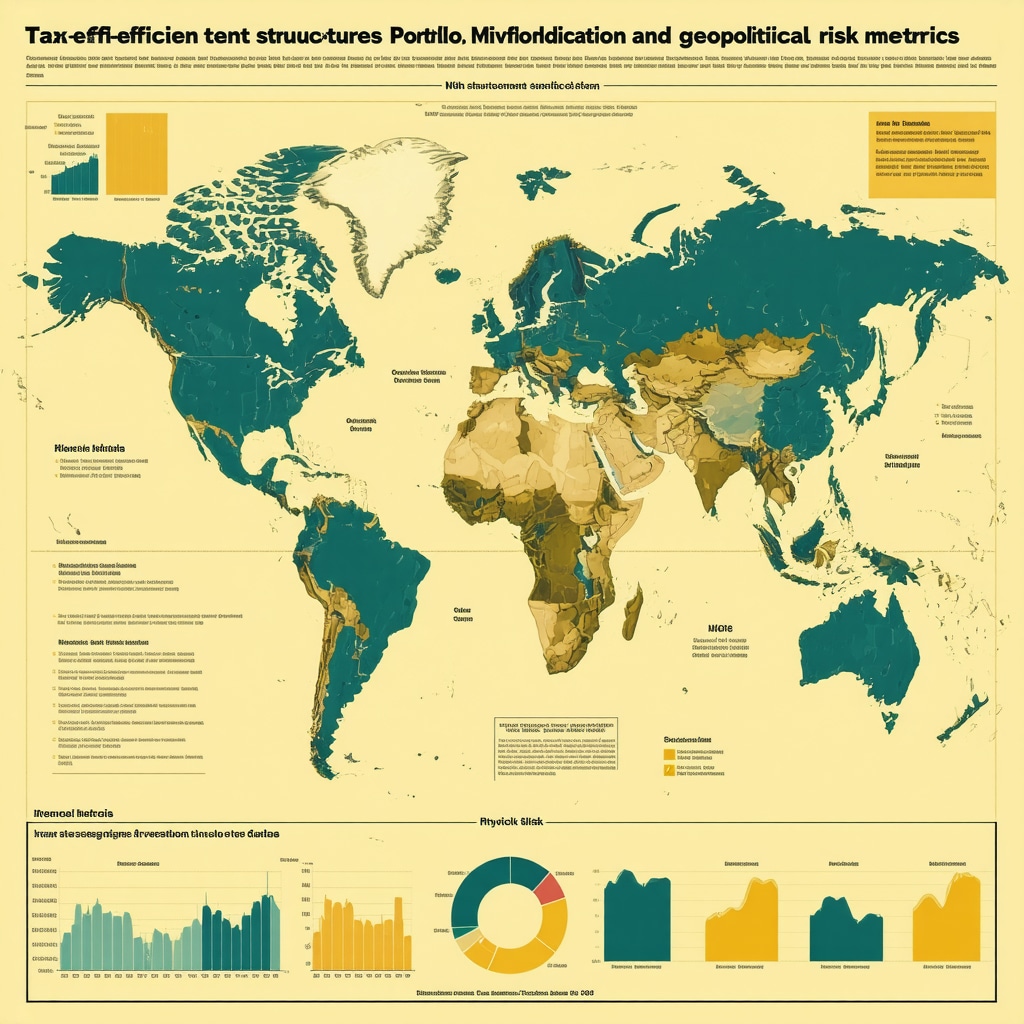Unlocking the Timeless Allure of Physical Gold as a Wealth Protector
In an era marked by economic turbulence and market volatility, physical gold investment remains a steadfast strategy to preserve and grow wealth. Unlike digital assets or paper investments, owning tangible gold offers a unique sense of security and control that resonates deeply with both seasoned investors and novices. This article delves into advanced physical gold investment strategies—guiding you on how to buy wisely, store securely, and leverage gold’s intrinsic value to fortify your financial future.
Strategic Acquisition: Navigating the Best Ways to Buy Physical Gold
Purchasing physical gold isn’t merely about buying bars or coins; it demands a nuanced understanding of market timing, authenticity verification, and choosing the right forms of gold. Investors should consider buying during price dips and diversifying between gold coins and bars to balance liquidity and storage convenience. For instance, premium collectible coins might offer numismatic value, whereas standard bullion bars provide cost-efficiency for bulk investments. Leveraging trusted dealers with transparent pricing and certification safeguards your capital from counterfeit risks.
What Are the Proven Techniques to Verify Authenticity and Avoid Fraud in Physical Gold Purchases?
Ensuring the genuineness of your physical gold is paramount. Techniques such as ultrasonic testing, X-ray fluorescence (XRF) analysis, and acid tests are traditional yet effective methods. Additionally, purchasing from reputable dealers who provide assay certificates and serial numbers adds layers of trust. Modern innovations include blockchain-backed provenance tracking, enhancing transparency in ownership history. Being vigilant about market scams and staying informed through authoritative sources, such as the [World Gold Council](https://www.gold.org/), empowers investors to make secure choices.
Fortifying Your Investment: Innovative Storage and Security Solutions
Once acquired, protecting physical gold against theft, damage, or loss is critical. Options range from high-security home safes to bank safety deposit boxes, each accompanied by trade-offs in accessibility and cost. Emerging alternatives include professional vaulting services that offer insured storage with audit trails—combining security with convenience. Investors should also consider insurance policies tailored for precious metals, mitigating risks beyond physical protection.
Capitalizing on Market Dynamics: Timing and Portfolio Integration
Physical gold’s role extends beyond a mere store of value; it acts as a dynamic hedge within diversified portfolios. Understanding global supply-demand trends, geopolitical influences, and currency fluctuations sharpens your investment timing. For example, central bank gold purchases can signal bullish price movements, while shifts in mining output impact availability. Integrating physical gold alongside ETFs, futures, or mining stocks—each with distinct risk-reward profiles—creates a resilient investment mosaic. Explore related strategies in our comprehensive guide on physical gold investment tips and hedging against inflation.
Embracing the Future: Staying Ahead with Continuous Learning and Adaptation
The gold market evolves with technological advancements and shifting economic landscapes. Savvy investors remain proactive by monitoring price forecasts, demand trends, and regulatory changes. Engaging with expert analyses and community insights ensures your strategies stay relevant and effective. Share your experiences or questions about physical gold investment in the comments below—your insights enrich our collective understanding and pave the way for smarter wealth preservation.
Personal Tales of Gold Storage: Finding Peace of Mind Beyond the Vault
Reflecting on my own journey with physical gold, I recall the initial anxiety I felt storing bars at home. The thought of theft or damage haunted me, especially as my collection grew. After some research and trial, I settled on a two-pronged approach: a solid, fire-resistant safe discreetly installed in a hidden room, paired with a rented safety deposit box at my local bank. This combo gave me the balance of accessibility and peace of mind I craved. For those considering this route, it’s worth exploring professional vaulting services that offer insured storage and even audit trails—a modern twist on old-school security.
Insurance is another layer I can’t stress enough. Investing in a policy tailored for precious metals can soothe worries about unforeseen events, from natural disasters to burglary. I found that some insurers require detailed appraisals and secure storage proofs before coverage, so plan accordingly.
Market Timing: How I Learned to Read the Gold Waves
One lesson that took years to grasp is that physical gold investment isn’t a “buy and forget” game. It’s more like surfing; you want to catch the right wave at the right time. Tracking central bank gold purchases, for instance, became a game-changer for me. When major banks ramp up buying, it often signals upcoming price rallies—a sort of financial weather forecast. The World Gold Council offers valuable data that I now check regularly.
Additionally, geopolitical tensions and currency fluctuations play their parts. For example, during periods of geopolitical unrest, gold often shines as a safe haven, boosting demand and prices. Watching these indicators alongside supply constraints from mining output helps me time acquisitions or decide when to hold or sell.
How Can You Balance Physical Gold with Digital and Paper Gold in Your Portfolio?
This question kept me up many nights when I first started diversifying. Physical gold offers tangible security, but ETFs and gold futures provide liquidity and ease of trading. I found that a blended portfolio, tailored to personal risk tolerance and goals, works best. If you’re curious about blending these options effectively, our guides on gold ETFs and gold futures offer detailed insights.
What’s your experience with balancing gold investment types? Have you leaned more towards physical bars, or do ETFs and futures dominate your portfolio? Share your thoughts and stories in the comments — your perspective might just help a fellow investor navigate these choices.
Decoding Gold’s Market Signals: Advanced Indicators Beyond the Basics
While many investors rely on the conventional cues such as geopolitical unrest or inflation spikes, advanced gold investors delve deeper into macroeconomic indicators and cross-asset correlations to anticipate price movements. Monitoring the correlation between gold and real interest rates, for example, provides profound insights. Typically, when real interest rates fall below zero, gold tends to rally as the opportunity cost of holding non-yielding assets diminishes. Furthermore, tracking currency strength indexes—especially the US Dollar Index (DXY)—can reveal inverse relationships that savvy investors exploit for timing buys and sells.
Another sophisticated approach involves analyzing central bank balance sheets and their gold reserves changes. Central banks’ strategic shifts—whether accumulation or reduction—often presage shifts in global gold demand and price trajectories. These subtle signals can be gleaned from detailed reports and datasets, such as those published by the World Gold Council. Incorporating these indicators into algorithmic models or bespoke dashboards can elevate decision-making from reactive to predictive.
How Do Geopolitical Risk Metrics Quantitatively Impact Physical Gold Pricing?
Geopolitical risk is notoriously complex to quantify, yet advanced investors employ indexes like the Geopolitical Risk Index (GPR) to incorporate these nuances into gold pricing models. Studies have demonstrated that spikes in the GPR correlate strongly with increased gold demand, as investors seek sanctuary assets amid uncertainty. Quantitative analysis using regression models shows that a one-standard-deviation increase in GPR can translate to a significant uplift in gold prices over short to medium-term horizons.
Moreover, regional conflicts or trade tensions can cause localized demand surges impacting physical gold premiums in specific markets, such as India or China. Understanding these microeconomic effects helps investors anticipate price variances beyond global spot price movements. For those seeking to integrate geopolitical risk metrics into their portfolio management, advanced platforms offering real-time data feeds and scenario modeling become invaluable tools.
Leveraging Tax Efficiency and Legal Frameworks in Physical Gold Ownership
Beyond acquisition and storage, optimizing the tax footprint of physical gold investments is a critical, often overlooked, dimension. Tax treatment varies significantly by jurisdiction—ranging from capital gains taxes, VAT exemptions, to inheritance considerations. For instance, in some countries, sovereign gold coins enjoy favorable tax exemptions, while in others, bullion bars might be taxed differently based on form or purity. Navigating these complexities requires both legal acumen and strategic planning.
Investors should consider structuring ownership through trusts, holding companies, or specialized precious metals IRAs where applicable. These vehicles not only provide tax advantages but also enhance estate planning and asset protection. Consulting with tax professionals who specialize in precious metals is indispensable to tailor strategies that align with personal financial goals and regulatory compliance.
Integrating Physical Gold in Sophisticated Multi-Asset Portfolios: Beyond Hedging
Physical gold’s role is evolving from a simple hedge to a strategic diversifier and potential alpha generator within multi-asset portfolios. Incorporating gold through a nuanced lens involves understanding its interaction with equities, bonds, real estate, and alternative assets under varying economic regimes. Scenario analysis and stress testing can reveal gold’s performance during stagflation, deflationary shocks, or economic expansions.
Additionally, pairing physical gold with thematic investments—such as sustainable mining companies or gold-backed digital tokens—opens opportunities for returns aligned with emerging trends. Such integration demands advanced portfolio construction techniques, including mean-variance optimization and risk parity frameworks adjusted for non-linear correlations.
For practitioners eager to explore these intricate dynamics, our in-depth resources on physical gold portfolio integration offer comprehensive methodologies and case studies.
Engage with our community and share your experiences or queries on advanced gold investment strategies to deepen collective expertise and navigate this multifaceted asset class with confidence.

Deciphering Tax Nuances and Legal Frameworks for Maximized Gold Investment Returns
In the complex realm of physical gold ownership, an astute investor must navigate the labyrinth of tax legislation and legal structures to truly optimize returns. Jurisdictional disparities dictate diverse tax treatments—ranging from capital gains tax exemptions on sovereign coins to varying VAT applications on bullion bars. Proactive tax planning, including leveraging precious metals IRAs, family trusts, or holding companies, can significantly mitigate tax liabilities while enhancing estate preservation and asset protection.
Expert consultation remains indispensable; tax professionals specializing in precious metals provide tailored strategies that align with evolving regulations and personal financial objectives. Such meticulous planning transcends mere compliance, delivering strategic advantages that bolster long-term wealth accumulation.
Integrating Physical Gold into Multi-Asset Portfolios: Advanced Diversification and Alpha Generation
Physical gold transcends its traditional role as a mere hedge, emerging as a sophisticated diversifier and potential alpha source within complex portfolio architectures. Advanced portfolio managers employ quantitative techniques—such as mean-variance optimization and risk parity adjusted for non-linear correlations—to harness gold’s unique interaction with equities, fixed income, real estate, and alternative assets under varied macroeconomic conditions.
Scenario analyses reveal gold’s resilience during stagflation and deflationary shocks, underscoring its strategic value. Moreover, thematic integration with sustainable mining equities or blockchain-backed gold tokens introduces innovative avenues for return enhancement aligned with emerging market trends.
How Can Tax-Efficient Structures Enhance Physical Gold Investment Outcomes?
Tax-efficient structures, such as precious metals-specific IRAs or trusts, provide mechanisms to defer or reduce tax burdens on capital gains and income derived from gold investments. For example, a self-directed IRA can shelter gains from annual taxation, allowing compounding growth within a tax-advantaged environment. Trusts can facilitate seamless wealth transfer while minimizing estate tax implications.
However, the efficacy of these structures hinges on jurisdictional regulations and the precise nature of the gold assets held. Consequently, integrating legal and tax expertise into investment planning is vital to fully capitalize on these benefits.
Quantitative Geopolitical Risk Metrics: Elevating Gold Price Forecasting Models
Incorporating geopolitical risk indices, such as the Geopolitical Risk Index (GPR), into gold price forecasting models enables investors to quantitatively assess how global tensions influence demand and pricing. Empirical studies demonstrate that spikes in the GPR correspond with heightened gold prices, reflecting its status as a sanctuary asset amid uncertainty.
Additionally, regional geopolitical events can induce localized premium fluctuations, particularly in markets with high cultural affinity for gold, such as India and China. Leveraging real-time geopolitical intelligence platforms allows for dynamic adjustment of investment positions, enhancing responsiveness to unfolding global events.
For rigorous analytical frameworks, integrating these risk metrics with macroeconomic indicators and central bank activity data—available from authoritative sources like the World Gold Council—fosters predictive accuracy and strategic agility.
Engage Deeper: Unlock Expert-Level Mastery in Physical Gold Investment
Embrace these advanced insights to refine your physical gold investment strategy, balancing legal, tax, and geopolitical dimensions with portfolio design sophistication. Join our expert community forums and subscribe to our newsletter for continuous updates, detailed case studies, and bespoke advisory services tailored to high-net-worth individuals and institutional investors. Your journey toward mastering gold’s multifaceted potential begins here—engage with us today and elevate your wealth preservation endeavors.

Frequently Asked Questions (FAQ)
What are the safest methods to verify the authenticity of physical gold before purchase?
Authenticating physical gold requires a combination of expert techniques such as ultrasonic testing, X-ray fluorescence (XRF) analysis, and acid tests. Purchasing from reputable dealers who provide assay certificates and serial numbers is crucial. Emerging technologies like blockchain-based provenance tracking further enhance transparency and reduce fraud risks.
How can investors effectively balance physical gold with digital and paper gold in a diversified portfolio?
A balanced portfolio blends physical gold’s tangible security with the liquidity and ease of trading offered by gold ETFs and futures. The optimal allocation depends on individual risk tolerance and investment goals. Physical gold offers long-term wealth preservation, while digital and paper gold facilitate tactical positioning and portfolio flexibility.
What advanced market indicators should investors monitor for optimal timing of physical gold transactions?
Beyond traditional cues like geopolitical unrest and inflation, sophisticated investors track real interest rates, the US Dollar Index (DXY), central bank gold purchases, and mining output. These indicators provide predictive insights into gold price movements, enabling more strategic buy or sell decisions.
How do geopolitical risk metrics quantitatively influence physical gold prices?
Indexes such as the Geopolitical Risk Index (GPR) capture global tension levels that directly impact gold demand. Statistical analyses show that increases in GPR correlate with significant gold price appreciation as investors seek safe havens. Regional conflicts can also cause localized premium fluctuations in key markets like India and China.
What are the best storage solutions for physical gold to minimize risk and ensure accessibility?
Storage options range from secure home safes with fire resistance to bank safety deposit boxes and professional vaulting services with insurance and audit trails. Combining multiple methods can optimize security and accessibility. Additionally, insuring physical gold against theft or damage is strongly recommended.
How can investors leverage tax-efficient structures to maximize returns from physical gold?
Tax treatment varies by jurisdiction, but strategies include using precious metals IRAs, trusts, or holding companies to defer or reduce capital gains and estate taxes. Consulting specialized tax professionals is essential to tailor approaches that comply with regulations while optimizing tax benefits.
In what ways can physical gold generate alpha within a multi-asset portfolio?
Physical gold serves not only as a hedge but also as a diversifier and potential alpha source by exhibiting low or negative correlations with other asset classes. Advanced portfolio construction techniques like mean-variance optimization and risk parity frameworks can exploit these dynamics, especially during economic regimes such as stagflation or deflation.
What role do central bank gold purchases play in forecasting gold price trends?
Central bank buying patterns provide critical forward-looking signals. Increases in reserves generally indicate bullish fundamentals and can presage price rallies. Monitoring detailed reports from organizations like the World Gold Council enables investors to incorporate these strategic shifts into their timing decisions.
How do legal frameworks impact physical gold ownership and transfer?
Legal structures influence ownership rights, inheritance, and tax liabilities. Utilizing trusts or holding companies can facilitate smoother wealth transfer and asset protection while aligning with regulatory compliance. Understanding local laws is vital to avoid pitfalls and optimize asset management.
What emerging technologies are shaping the future of physical gold investment?
Technologies such as blockchain for provenance tracking, digital tokens backed by physical gold, and advanced analytics integrating geopolitical and macroeconomic data are revolutionizing market transparency and trading efficiency. Staying informed on these innovations can provide competitive advantages.
Trusted External Sources
- World Gold Council – An authoritative global authority on gold market data, central bank purchases, and investment trends, providing comprehensive research and analysis crucial for informed decision-making.
- International Monetary Fund (IMF) – Offers detailed reports on global gold reserves and economic indicators that influence gold’s macroeconomic role and price movements.
- Geopolitical Risk Index (GPR) by Caldara and Iacoviello – A quantitative measure of geopolitical tensions that helps investors integrate risk metrics into gold pricing models.
- Metals Focus – A leading consultancy providing in-depth research and forecasts on mining output, supply-demand dynamics, and precious metals markets.
- Tax Foundation and Local Tax Authorities – Provide essential information on jurisdiction-specific tax regulations affecting physical gold ownership and investment strategies.
Conclusion
Physical gold remains a cornerstone for wealth preservation and strategic portfolio diversification amid fluctuating economic and geopolitical landscapes. Mastering its acquisition involves verifying authenticity with advanced techniques and selecting optimal forms—balancing numismatic appeal and cost efficiency. Safeguarding gold through innovative storage and tailored insurance mitigates risk, while sophisticated market indicators such as real interest rates, central bank activity, and geopolitical risk indexes refine timing decisions.
Integrating physical gold within tax-efficient legal frameworks and multi-asset portfolios unlocks further value, transforming gold from a passive hedge into a dynamic alpha generator. Embracing continuous learning and leveraging emerging technologies sustains investment relevance and resilience.
Empower your financial future by applying these nuanced insights, sharing your experiences, and exploring related expert resources. Engage with our community to deepen your mastery of physical gold investment and fortify your wealth with confidence.











The discussion about physical gold as a reliable wealth protector really resonated with me, especially the part about strategic acquisition. I’ve found that timing the market dips is truly essential, but it can be quite challenging to predict with consistency. What’s equally crucial, as the post highlights, is verifying the authenticity of gold purchases. Early in my investing journey, I relied heavily on reputable dealers and their certifications, but recently I’ve started exploring some of the newer methods like blockchain-backed provenance tracking. It’s interesting to see how technology is merging with this ancient asset to reduce fraud risks.
Regarding storage, I’ve experimented with both home safes and secured bank deposit boxes. But the idea of professional vaulting services with insured storage and audit trails seems like a strong middle ground that I’m considering more seriously now. Given the anxiety around theft and damage, adding insurance to the storage equation seems non-negotiable.
For those who have been investing in gold for a while, how do you balance the peace of mind with accessibility? Have you found any innovative storage solutions or insurance options that provide a good blend of security and convenience? I’d love to hear community insights on making physical gold ownership both safe and accessible in daily life.
This post provides a comprehensive overview of physical gold investing, and I particularly appreciate the emphasis on security and market timing. From my experience, diversification within physical gold — such as blending coins with different purity levels and storage methods — can really help mitigate risks like theft or counterfeit. I’ve also found that staying updated with geopolitical developments is crucial, especially since regional conflicts often lead to sudden shifts in premiums and demand.
Regarding storage, I’ve been using a combination of secure home safes and a bank safety deposit box. Recently, I learned about vaulting services that offer insured, audited storage in professional facilities, which seems like a prudent move for valuable holdings. Insurance, in particular, gives peace of mind—do any of you have recommendations for providers that specialize in insuring precious metals?
Finally, I’m curious: how do others strike a balance between easy access for liquidity and the need for secure, long-term storage? Are there innovative solutions in this space that combine both effectively? Would love to hear your thoughts and experiences on safeguarding gold while keeping it accessible.